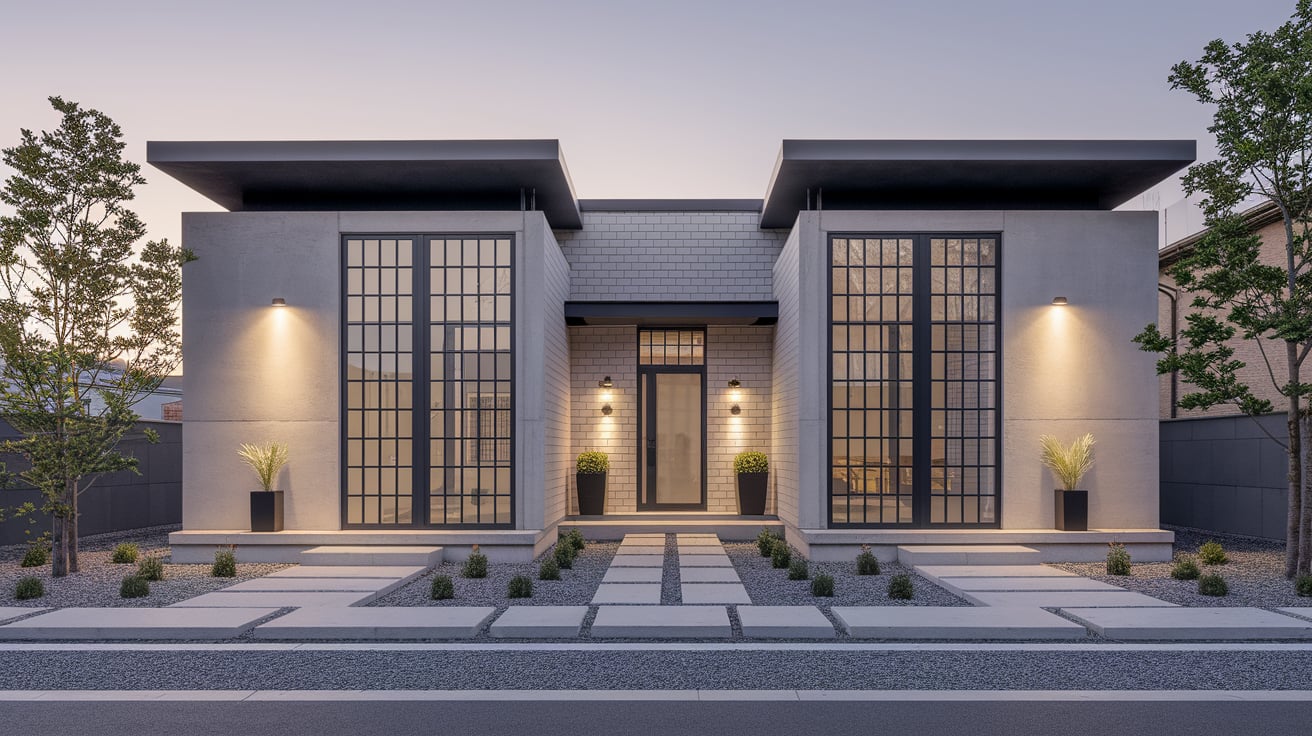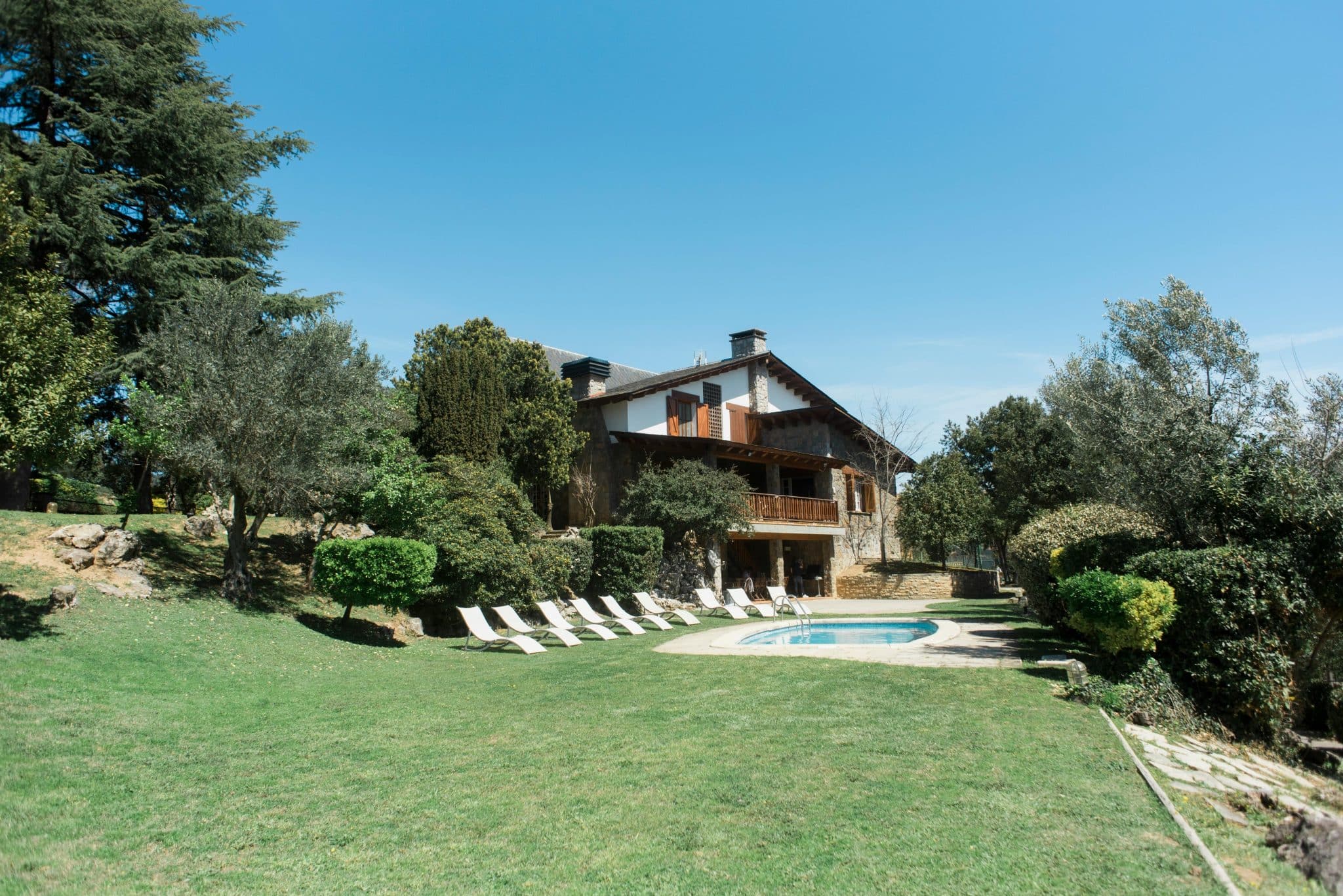Do you often feel your home lacks character? Many homeowners want functional spaces that still look good. Simple, raw designs with clean lines can change how you feel in your home.
Industrial design mixes basic form with purpose. It uses materials like metal, wood, and exposed brick. These features add depth without clutter.
This style works well for small and large spaces. You can add or remove items as needed. The look stays fresh over time.
In this post, we show you 15 ways to bring industrial style into your home. Each idea is simple to use and won’t break your budget. Keep reading to find design tips you can start using today.
Why Minimalist Industrial House Design Is Trending?
People today want homes that work well and look good without too much fuss. Minimalist industrial design perfectly fits this need.
This style saves money in the long run. When you choose basic items that last, you buy less often. You need fewer things to make a room look complete.
Many young homeowners have less space to work with. Industrial design makes small areas look bigger. The open feel comes from fewer walls and simple layouts.
These homes are easy to clean and keep tidy. With fewer items around, dust has fewer places to hide. Smooth surfaces wipe down quickly.
The look works well with what we already have. Old buildings with exposed pipes and brick walls need less work to fit this style. You can keep these features instead of hiding them.
Social media has spread these designs far and wide. Photos of clean, open spaces get lots of attention online. People see these images and want the same look for their own homes.
The style also matches our wish to use things longer. Industrial pieces often come from old items given new life. This fits with the push to waste less and reuse more.
15 Beautiful Minimalist Industrial House Design Ideas
Here are fifteen ways to blend the raw feel of industrial design with the calm of minimalist style.
1. Exposed Brick Walls with Clean Lines
Brick walls tell a story of time and craft. Keep the wall bare or use a clear seal to show its true color. Pair it with simple white furniture to make the brick stand out. The rough texture of brick works well with smooth surfaces nearby. This mix creates a space that feels both old and new at once.
2. Open Floor Plans with Steel Accents
Open spaces help light move through your home. Remove walls that aren’t needed for support. Add steel beams or columns where walls once stood. These metal parts can be painted or left raw. The open area makes small homes feel bigger and lets you see from room to room with ease.
3. Concrete Floors and Neutral Palettes
Concrete floors last for years with little care needed. They stay cool in summer and work well with floor heating. Choose gray, tan, or white tones for walls and floors. This base lets you add color with a few small items. The plain background makes even simple things look special.
4. Black-Framed Windows and Doors
Dark frames around glass create a strong look without being too much. They draw your eye but don’t fight with other parts of the room. These frames work in any room and match most colors. Large windows with thin black frames bring in light while adding style to plain walls.
5. Minimalist Industrial Lighting Fixtures
Simple lights with a clear purpose make rooms work better. Pick bare bulbs hung from cords or pipes for a basic look. Metal shades in black or brass add more style. Place lights where they help you see what you need to see. Good lighting changes how rooms feel at night.
6. Raw Wood Elements with Simple Shapes
Wood brings life and warmth to cool industrial spaces. Choose tables, shelves, or chairs with plain lines. Look for wood with knots and marks that show its past. The grain and tone of real wood adds depth to rooms. This natural touch helps spaces feel less cold.
7. Matte Black Kitchen Fixtures
Black faucets, handles, and sinks create a bold but quiet look. They don’t show water spots as much as shiny metal. These dark parts work well with light counters and walls. The strong color adds weight to the room’s design. Matte finish stays looking good longer than glossy types.
8. Exposed Ductwork as a Design Feature
Air ducts and pipes can be part of your room’s look. Paint them to match the ceiling or make them stand out. Round metal tubes add curves to rooms with many straight lines. This honest show of how homes work creates real industrial style. It also makes ceilings seem higher.
9. Industrial Staircases with Clean Geometry
Stairs can be more than just steps between floors. Metal steps with gaps let light pass through. Cable rails use less space than solid walls. These open designs make halls and stairs feel less closed in. The see-through parts keep rooms bright and airy.
10. Built-In Storage with Sleek Cabinets
Hidden storage keeps rooms looking clean and calm. Build shelves and drawers into walls where they blend in. Use push-to-open doors that don’t need handles. Pick flat panels in white or wood tones. Good storage means less stuff sits out on tables and floors.
11. Neutral Textiles and Metal Furniture
Soft goods in calm colors rest the eye and add comfort. Choose cotton, wool, or linen in white, tan, or gray. Add metal chairs, tables, or lamps with thin legs and frames. The cloth softens the hard parts of the room. This mix makes places where you want to sit and stay.
12. Large Minimal Artwork on Bare Walls
Art helps rooms feel finished and lived-in. Hang one big piece on a wall instead of many small ones. Black and white photos or simple line art works best. The art should add to the room without taking over. Think of it as a window to look into, not a bold statement.
13. Minimal Industrial Bathroom with Concrete Sink
Bathrooms work well with the clean look of industrial style. Try a sink made from smooth concrete or stone. Pair it with plain tile and glass shower walls. Keep the color scheme limited to two or three tones. The result is a space that feels like a calm, clean retreat.
14. Reclaimed Materials in a Minimal Layout
Old wood, metal, or stone can find new uses in your home. Look for beams, doors, or floor boards from old buildings. Use these finds as key parts in simple rooms. Each piece brings its own story and marks. This reuse gives depth while being kind to the earth.
15. Indoor Plants for Soft Contrast
Green plants soften the hard edges of industrial spaces. Choose a few large plants instead of many small ones. Ferns, palms, and wide-leaf plants work well. Put them in simple pots on the floor or tables. The living green stands out against gray, white, and black backdrops.
Common Design Mistakes to Avoid
When creating a minimalist industrial space, watch out for these common errors.
1. Over-Decorating or Mixing Too Many Styles
- Adding too many items makes spaces feel busy and confused
- Failing to pick one clear design direction
- Mixing farm house, beach, or other themes with industrial
- Not leaving enough empty space around key pieces
- Using small decorative items that create visual noise
- Choosing patterns that clash with the simple industrial look
2. Neglecting Warmth and Comfort
- Creating spaces that look good but feel cold to live in
- Forgetting to add soft rugs and throws for comfort
- Not planning enough lighting for evening hours
- Missing the balance of wood to offset metal and concrete
- Using furniture that looks good but isn’t comfy
- Ignoring sound issues in spaces with hard surfaces
Alternate Design Ideas to Consider
If pure industrial style feels too stark, try these mixed approaches.
1. Scandinavian Industrial
This blend adds the warm woods and light colors of Nordic design. Think white walls, light oak floors, and simple gray metal accents.
Add sheepskin throws on metal chairs for comfort. The result feels bright and open but with industrial structure. This mix works well in places with less natural light.
2. Japandi with Industrial Elements
Japandi mixes Japanese and Scandinavian styles. Add industrial parts like metal light fixtures or concrete counters. Keep the clean lines and natural materials of Japandi.
Use black metal to accent light woods. This approach creates calm, ordered spaces that still have visual weight and presence.
Conclusion
These fifteen ideas show how industrial style can work in any home. You don’t need to use all of them at once. Even one or two changes can shift how your space feels.
The mix of raw materials with clean design creates rooms that last. They don’t go out of style quickly. They also work well for busy life since they need little upkeep.
What makes this style good is how it shows the true nature of things. Nothing hides behind fake covers. Each part serves a purpose while looking good.
Try adding one industrial touch to your home this week. Notice how it changes the feel. You might find that less truly is more when it comes to making spaces you love.
Want to learn more about home design? Leave a comment below with your questions. Or share your own industrial design success story!

























